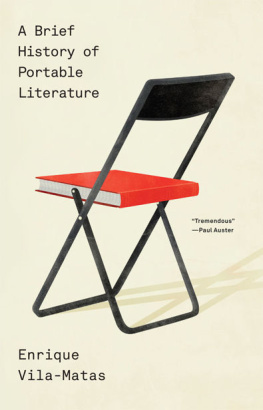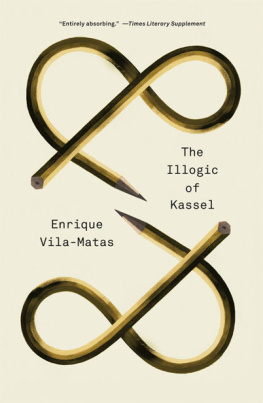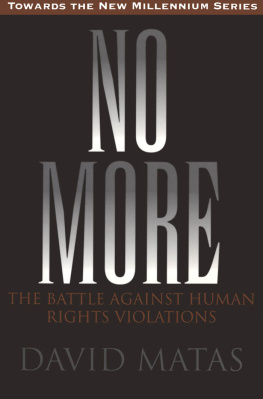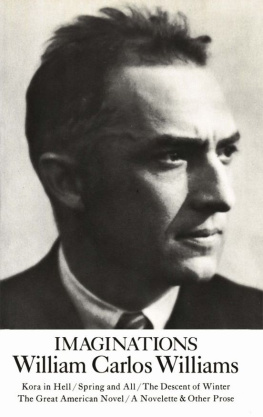Enrique Vila-Matas - A Brief History of Portable Literature (New Directions Paperbook)
Here you can read online Enrique Vila-Matas - A Brief History of Portable Literature (New Directions Paperbook) full text of the book (entire story) in english for free. Download pdf and epub, get meaning, cover and reviews about this ebook. year: 2015, publisher: New Directions, genre: Detective and thriller. Description of the work, (preface) as well as reviews are available. Best literature library LitArk.com created for fans of good reading and offers a wide selection of genres:
Romance novel
Science fiction
Adventure
Detective
Science
History
Home and family
Prose
Art
Politics
Computer
Non-fiction
Religion
Business
Children
Humor
Choose a favorite category and find really read worthwhile books. Enjoy immersion in the world of imagination, feel the emotions of the characters or learn something new for yourself, make an fascinating discovery.
- Book:A Brief History of Portable Literature (New Directions Paperbook)
- Author:
- Publisher:New Directions
- Genre:
- Year:2015
- Rating:4 / 5
- Favourites:Add to favourites
- Your mark:
- 80
- 1
- 2
- 3
- 4
- 5
A Brief History of Portable Literature (New Directions Paperbook): summary, description and annotation
We offer to read an annotation, description, summary or preface (depends on what the author of the book "A Brief History of Portable Literature (New Directions Paperbook)" wrote himself). If you haven't found the necessary information about the book — write in the comments, we will try to find it.
Enrique Vila-Matas: author's other books
Who wrote A Brief History of Portable Literature (New Directions Paperbook)? Find out the surname, the name of the author of the book and a list of all author's works by series.
A Brief History of Portable Literature (New Directions Paperbook) — read online for free the complete book (whole text) full work
Below is the text of the book, divided by pages. System saving the place of the last page read, allows you to conveniently read the book "A Brief History of Portable Literature (New Directions Paperbook)" online for free, without having to search again every time where you left off. Put a bookmark, and you can go to the page where you finished reading at any time.
Font size:
Interval:
Bookmark:
ALSO BY ENRIQUE VILA-MATAS
from New Directions
Bartleby & Co.
Dublinesque
The Illogic of Kassell
Montanos Malady
Never Any End to Paris

The infinite, my dear friend, is no big dealits a matter of writingthe universe exists only on paper.
Paul Valry, Monsieur Teste
PROLOGUE
Toward the end of the winter of 1924, on the enormous, towering rock where the concept of eternal recurrence first came to Nietzsche, the Russian writer Andrei Bely suffered a nervous breakdown as he experienced the irremediably ascending lavas of the superconscious. On the same day, at the same time, a short distance away, the musician Edgar Varse fell from his horse when, parodying Apollinaire, he pretended to set off for war.
For me these two scenes seem to be the pillars on which the history of portable literature is built: a history European in its origins and as light as the desk-case Paul Morand carried with him on luxury trains as he traveled the whole of an illuminated, nocturnal Europe. This moveable desk was the inspiration for Marcel Duchamps Bote-en-valise, indisputably the most brilliant bid to exalt portability in art. Duchamps box-in-a-suitcasewhich contained miniature reproductions of each his workssoon became an anagram for portable literature and the symbol by which the first Shandies would come to be recognized.
Months later and with a minor alteration to the bote-en-valise (a hairclip now serving as its clasp), this anagram would be
rearranged by Jacques Rigaut, who tried to represent, as he put it, the apotheosis of featherweights in the history of literature. His drawing was widely praisedperhaps for its markedly unorthodox characterand it prompted an extraordinary avalanche of new and daring corruptions of the Duchampian anagram, very clear evidence of the unremittingly transgressive impulse characterizing the first writers incorporated into the Shandy secret society.
Around the same timeand because of a widespread fear among those first Shandies that the box-in-a-suitcase might fall into the hands of any old charlatanWalter Benjamin came up with a remarkably successful design for the joyous book-weighing machine that bears his name and allows us to judge, to this day, with unerring precision, which literary works are insupportable, and thereforethough they may try to disguise the factuntransportable.
Its no coincidence that much of the originality of what was written by the inventor of the Benjamin machine can be attributed to his microscopic attention to detail (along with his unflagging command of philosophical theories). It was the small things that he was most drawn to, his close friend Gershom Scholem wrote. Walter Benjamin had a fondness for old toys, postage stamps, photographic postcards, and those imitations of real winter landscapes contained within a glass globe where it snows when shaken.
Walter Benjamins own handwriting was almost microscopic. His never-achieved ambition was to fit a hundred lines onto a single sheet of paper. Scholem says that the first time he visited Benjamin in Paris, his friend dragged him along to the Muse de Cluny to show him, in an exhibition of ritual Jewish objects, two grains of wheat upon which some kindred spirit had written out the entirety of the Shema Yisrael.
Walter Benjamin and Marcel Duchamp were kindred spirits. Both were vagrants, always on the move, exiled from the world of art, and, at the same time, collectors weighed down by many thingsthat is, by passions. Both knew that to miniaturize is to make portable, and for a vagrant and an exile, that is the best way of owning things.
But to miniaturize is also to conceal. Duchamp, for example, always felt drawn to extremely small things that cried out to be deciphered: insignia, manuscripts, symbols. For him, to miniaturize also meant to make useless: What is reduced finds itself in a sense liberated from meaning. Its smallness is, at one and the same time, a totality and a fragment. The love of small things is a childish emotion.
As childish as the perspective of Kafka who, as is well known, engaged in a struggle to the death to enter into paternal society, but would only have done so on the condition he could carry on being the irresponsible child he was.
The portable writers always behaved like irresponsible children. From the outset, they established staying single as an essential requirement for entering into the Shandy secret society or, at least, acting as though one were. That is, functioning in the manner of a bachelor machine in the sense Marcel Duchamp intended soon after learningthrough Edgar Varse no lessof Andrei Belys nervous breakdown: At that moment, I dont know why, I ceased listening to Varse and began to think one shouldnt weigh life down excessively, with too many tasks, with what we call a wife, children, a house in the country, a car, etc. Happily, I came to understand this very early on. For a long time, I have lived as a bachelor much more easily than if Id had to tackle all of lifes normal difficulties. When it comes down to it, this is key.
That Duchamp should come to understand all of this just as Varse was telling him of Belys nervous breakdown on the enormous, towering rock of eternal recurrence is still strange. One inevitably wonders what link there might be between Belys frayed nerves and the Duchampian resolve to remain single at all costs, daydreaming like all irresponsible children. Its hardpractically impossibleto know. Most likely there isnt any link at all, and the image of a celibate person (impossible, gratuitous, outrageous) simply occurred to Duchamp all of a sudden, unaccompanied by any explicable memory or conscious association. Thats to say, a portable artist, or what amounts to the same thing, someone easy to carry around, wherever one goes.
Whatever happened, the one clear thing is that Varses fall, Belys breakdown, and the unexpected emergence of a celibate, gratuitous, outrageous artist in Duchamps field of vision were the pillars on which the Shandy secret society was based.
Two other essential requirements for being a member of this society (apart from the demand for high-grade madness) were established: along with the fact ones work mustnt weigh very much and should easily fit into a suitcase, the other essential condition was that of functioning in the manner of a bachelor machine.
Though not essential, certain other typically Shandy-esque characteristics were also advisable: an innovative bent, an extreme sexuality, a disinterest in grand statements, a tireless nomadism, a fraught coexistence with doppelgngers, a sympathy for negritude, and the cultivation of the art of insolence.
In insolence, there is a swiftness of action, a proud spontaneity that smashes the old mechanisms, triumphing speedily over a powerful but sluggish enemy. From the outset, the Shandies decided that what they really wanted was for the portable conspiracy to become the stunning celebration of what appears and disappears with the arrogant velocity of the lightning bolt of insolence. Therefore, the portable conspiracywhose principle characteristic was that of conspiring for the sake of conspiringshould be short-lived. Three years after Varses fall and Belys breakdownon the day of the Gngora tribute in Seville in 1927 to be precisethe Satanist Aleister Crowley, with a deliberately histrionic flourish, dissolved the secret society.
Many years after Crowley set the Shandy eagle free, I find myself in a position to reveal that the portable society exists beyond the distant horizons of its members imagination. It was a nexus, a secret society altogether unprecedented in the history of art.
Next pageFont size:
Interval:
Bookmark:
Similar books «A Brief History of Portable Literature (New Directions Paperbook)»
Look at similar books to A Brief History of Portable Literature (New Directions Paperbook). We have selected literature similar in name and meaning in the hope of providing readers with more options to find new, interesting, not yet read works.
Discussion, reviews of the book A Brief History of Portable Literature (New Directions Paperbook) and just readers' own opinions. Leave your comments, write what you think about the work, its meaning or the main characters. Specify what exactly you liked and what you didn't like, and why you think so.












